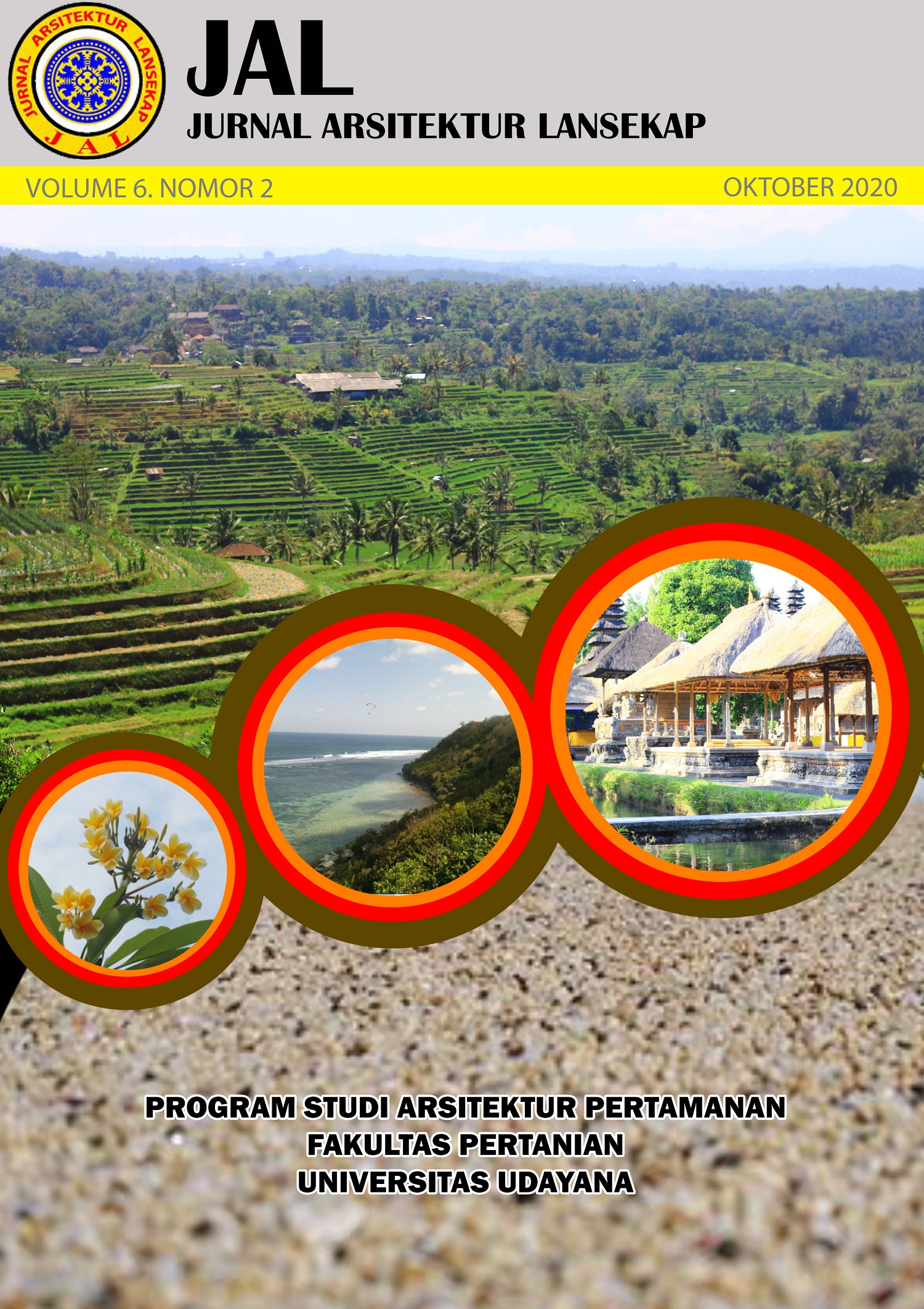Analisis konservasi kawasan banjir di Jakarta Pusat (studi kasus Kecamatan Gambir)
Abstract
Conservation Analysis of Flood Area In Jakarta Pusat (Case Study: Gambir Sub-District). The city's development as one of the primary government centers has experienced various changes in the land's physical environment, which are increasingly dense by various infrastructures to impact the quality of people's lives and the environment. This study aims to achieve a healthy ecological system by conserving flood-prone areas as human needs for a healthy environment. This research took place in the Gambir Subdistrict, Central Jakarta Municipality, Special Region of Jakarta Province, with an area of 7.59 km2. The method used in this paper is a descriptive analysis using secondary data. Based on the analysis of land use maps, green open space maps, land subsidence maps and topography, yielded three Conservation Area categories in Gambir District, namely (a) High Category, covering urban villages (Kelurahan) of Kebon Kelapa and Gambir (b) Medium category, covering urban villages of Duri Pulo and Cideng (c) Low Category, covering urban villages of North Petojo and South Petojo areas.
Downloads
References
Badan Pusat Statistik (BPS). 2015. Kecamatan Gambir Dalam Angka 2015. Katalog BPS 11020013173. Website http://www.bps.go.id/, diakses pada tahun 2019
Badan Pusat Statistik (BPS). 2015. Kecamatan Gambir Dalam Angka 2017. Katalog BPS 1102001.3173080. Website http://www.bps.go.id/, diakses pada tahun 2020
Crane, P.,Ann K. 2005. Nature in the metropolis. Science.308.1225
Keputusan Menteri Pekerjaan Umum Republik Indonesia Nomor 05/PRT/M/2008 tentang Pedoman Penyediaan Dan Pemanfaatan Ruang Terbuka Hijau Di Kawasan Perkotaan
Luis, L.and Laura, C. 2012. The Role of Urban Parks to Enhance Metropolitan Sustainability; The Case of Oporto. International Journal of Energy and Environment Issue 4.vol 6.
Monica, D, Ines G, Mihaela N. 2010. Sustainable Natural Landscape Management within Buchares Metropolitan area. Geography Journal 62 (2010)1.21.32
Marsh, W. 1997. Landscape Planning: Environmental Planning Environmental Application, America. John Wiley & Sons, Inc. 3th edition. New Jersey.
Michell, W.B. 1989. Geography and Resource Analysis, Longman Scientific and Technical; 2nd edition, New York, USA.
Peraturan Daerah Provinsi Daerah Khusus Ibukota Jakarta Nomor 1 Tahun 2012 Tentang Rencana Tata Ruang Wilayah 2030
Sahalessy, A, Krisantia,I , Budiyanti, RBB. 2019. Prosiding Seminar Nasional Pembangunan Wilayah dan Kota Berkelanjutan dengan judul Evaluasi Ketersediaan Ruang Terbuka Hijau Publik Menurut Peraturan Menteri Pekerjaan Umum Nomor 5 Tahun 2008 di Kecamatan Gambir, Jakarta Pusat. Hal 283 - 288.
DOI : 10.25105/pwkb.v1i1.5291
Shalih, O. (2019, December 1). Analisis Fungsi Banjir Kanal Timur : Dalam Menanggulangi Banjir di Wilayah DKI Jakarta bagian Timur. https://doi.org/10.31227/osf.io/j8awk
Steiner, F. 2000, The Living Landscape: An Ecological Approach to Landscape Planning, 2nd Edition, USA
Undang-Undang Republik Indonesia Nomor 26 Tahun 2007 Tentang Penataan Ruang
Wirawan, A., Yuwono, B., & Sabri, L. (2019). Pengamatan Penurunan Muka Tanah Kota Semarang
Metode Survei Gnss Tahun 2018. Jurnal Geodesi Undip, 8(1), 418-427. Retrieved from https://ejournal3.undip.ac.id/index.php/geodesi/article/view/22772
An author who publishes in the Jurnal Arsitektur Lansekap (JAL) agrees to the following terms:
- Author retains the copyright and grants the journal the right of first publication of the work simultaneously licensed under the Creative Commons Attribution-ShareAlike 4.0 License that allows others to share the work with an acknowledgement of the work's authorship and initial publication in this journal
- Author is able to enter into separate, additional contractual arrangements for the non-exclusive distribution of the journal's published version of the work (e.g., post it to an institutional repository or publish it in a book) with the acknowledgement of its initial publication in this journal.
- Author is permitted and encouraged to post his/her work online (e.g., in institutional repositories or on their website) prior to and during the submission process, as it can lead to productive exchanges, as well as earlier and greater citation of the published work (See The Effect of Open Access).
Read more about the Creative Commons Attribution-ShareAlike 4.0 Licence here: https://creativecommons.org/licenses/by-sa/4.0/.







